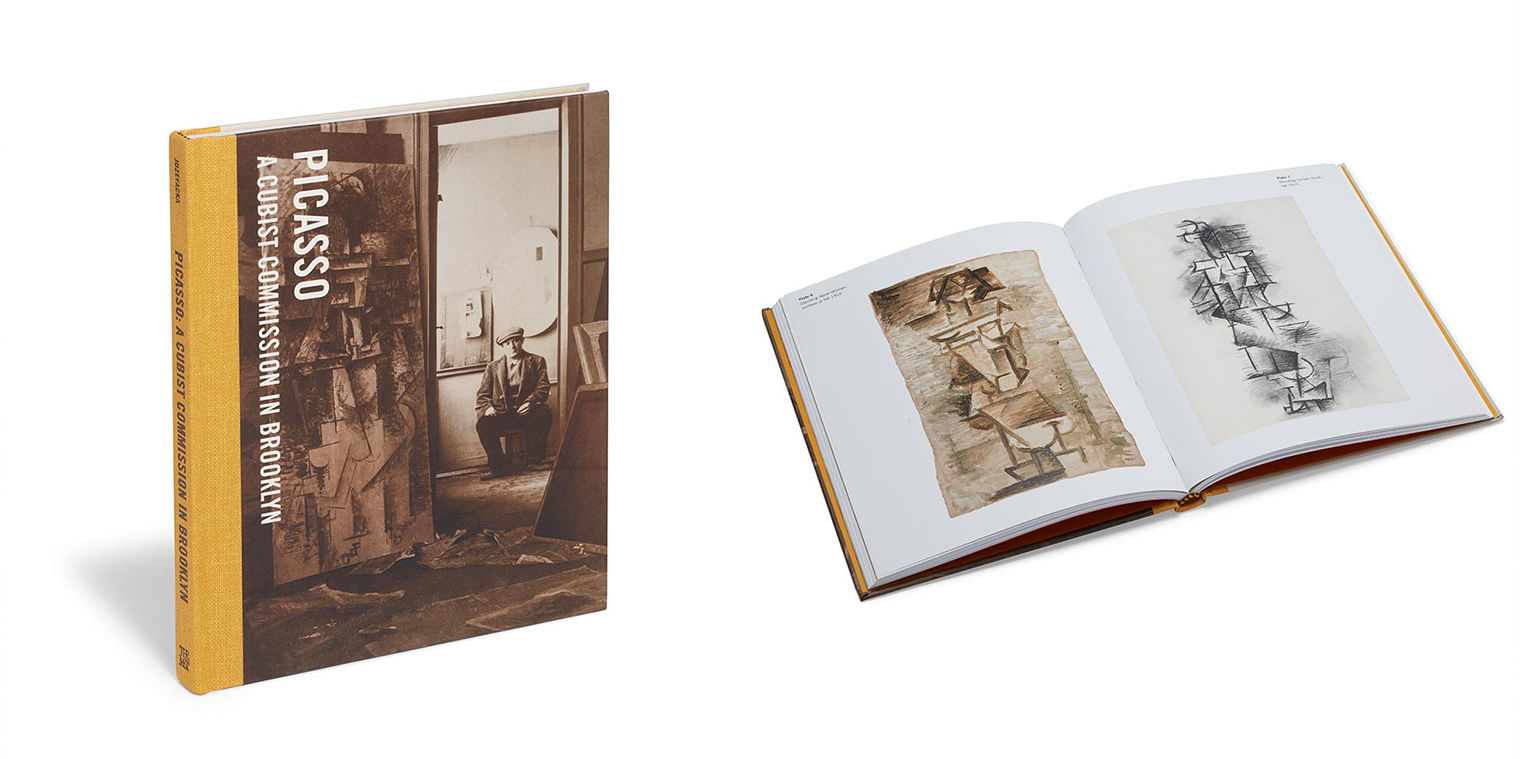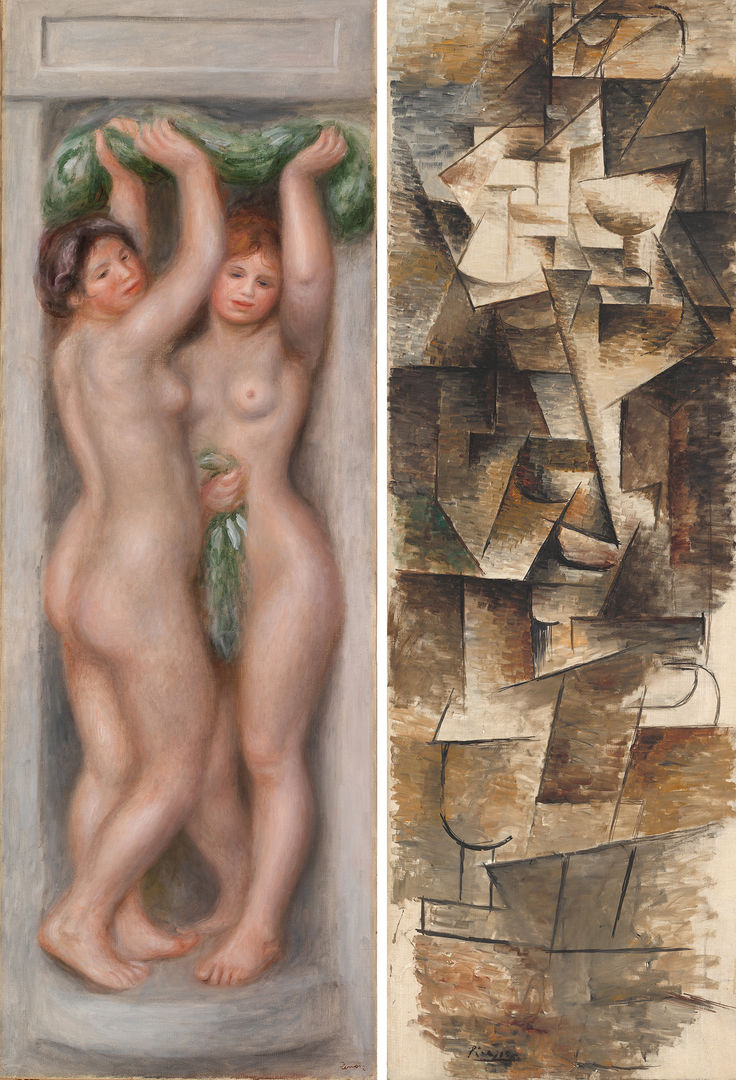Picasso: A Cubist Commission in Brooklyn by Anna Jozefacka with Lauren Rosati investigates an unrealized decorative commission for a series of eleven paintings by Pablo Picasso intended for the Brooklyn residence of American artist, collector, and critic Hamilton Easter Field. This catalogue accompanies the first presentation of this little-known chapter of Picasso’s Cubist period and offers insight into the evolution of his style.
I spoke with Anna Jozefacka, author of the catalogue and curator of the exhibition on view through January 14, 2024. She revealed her experience with the archives, the relationship between Field and Picasso, and the role that private decorative commissions play in the narrative of modern art.
Picasso: A Cubist Commission in Brooklyn is available at The Met Store and MetPublications.
Isabelle Qian:
There is limited evidence of the Field commission in the Picasso archive in Paris. What challenges did you face while researching this topic? Did you make any unexpected discoveries looking through primary materials?
Anna Jozefacka:
I started out by reexamining known archival documents to see what else could be gleaned from them, especially when paired with other materials. An important moment was looking at Field’s letter to Picasso, which is the only evidence of the commission remaining in the Picasso archive. I remember viewing it for the first time—it has been cited but not published until now—and scrutinizing not only Field’s writing, but also his renderings of the library’s elevation and floor plan. I immediately realized how vital these renderings were for understanding Field’s vision of Picasso’s paintings covering all available wall area in the room. The completed commission would have resulted in an immersive experience.

Letter from Hamilton Easter Field to Pablo Picasso, postmarked July 12, 1910. Ink on paper, two double-sided sheets; each sheet: 6 11∕16 × 9 5∕8 in. (16.7 × 24.5 cm); envelope: 3 7∕16 × 5 1∕8 in. (8.8 × 13 cm). Musée National Picasso-Paris, Don succession Pablo Picasso, 1992 (SlSAP/C/47/28/1 [1, 2])
One of my primary research goals was to unearth more information on the room in Field’s residence for which Picasso’s paintings were intended. I was unable to locate a photograph of the room but tracked down something perhaps more intriguing: a wooden panel dated to 1913 made by the sculptor Robert Laurent for a different room in Field’s house. The panel includes architectural references to the house portrayed in relief, including a floor plan of the library. Locating the panel allowed me to compare it with the floor plan of the room sketched in Field’s letter. They matched! From Laurent’s more complete rendering, I was able to discern that the room Field offered to Picasso was located on the main level of the house and that it was part of its suite of reception rooms.

Robert Laurent (American, born France, 1890–1970). Balloons, 1913. Walnut, 9 × 65 3∕4 × 7∕8 in. (22.8 × 167 × 2.2 cm). Private collection; and detail showing the far-right section with the floor plans of the second (at top) and parlor (at bottom) stories.
Another example of discovery, or rather rediscovery, is Picasso’s response to Field. The letter Picasso wrote to Field has survived, but at some point, lost its original context. Since the 1970s, the letter has occasionally appeared on the market as an ALS [autographed letter signed] by Picasso. Knowing the content of Field’s letter allowed me to re-identify it as Picasso’s response to Field. Both letters are reproduced in the catalogue, and Field’s letter to Picasso is on view in the exhibition.
Qian:
This book isn’t just about Picasso—it’s also about Hamilton Easter Field, who commissioned the panels. How is Field’s story important to Picasso’s works?
Jozefacka:
My research followed two parallel tracks. On one hand, I investigated Field and his house, and on the other, Picasso and his art. But I was also keen on learning more about the interaction between Field and Picasso. When Field and Picasso met in Paris in 1909, Field was primarily a painter like Picasso. It was therefore a meeting of two artists.
Field recalled his 1909 meeting with Picasso several times in his art columns written for the Brooklyn Daily Eagle between 1919 and 1922. These writings proved especially fruitful for understanding the interaction between these two artists. Both embraced diverse genres and admired styles of painting from the past. Viewing the meeting through Field’s lens offers insight into how artists received Picasso’s radical style. Part of Field’s reaction was to present Picasso with a new direction for exploration—a decorative commission.

Left: Auguste Renoir (French, 1841–1919). Caryatids (Cariatides), ca. 1910. Oil on canvas 51 3∕8 × 17 7∕8 in. (130.5 × 45.4. cm). Barnes Foundation, Philadelphia (BF918)]. Right: Pablo Picasso (Spanish, Málaga 1881–1973 Mougins, France) Nude Woman, Cadaqués, summer 1910, or Paris, fall 1910 Oil on canvas. 73 3∕4 × 24 in. (187.3 × 61 cm) National Gallery of Art, Washington, D.C., Ailsa Mellon Bruce Fund (1972.46.1) © 2023 Estate of Pablo Picasso / Artists Rights Society (ARS), New York
Qian:
This commission was Picasso’s first foray into decorative painting. In the book you note that this genre would have been challenging for him to integrate with his individual style. Why were Picasso’s Cubism and decorative painting particularly difficult to bring together?
Jozefacka:
The Field commission was Picasso’s first engagement with a multi-painting project for a specific location. The brief called for a range of painting sizes and proportions, which needed to be conceived in relation to each other and to the space in which they were to be permanently installed. While already an experienced painter with some large compositions to his credit—specifically Les Demoiselles d’Avignon (1907), now in the collection of the Museum of Modern Art, New York—this was otherwise uncharted territory for Picasso.
When Field made his offer, Picasso was carrying out his pictorial experiments on easel paintings, smaller works of a hand scale. His paintings were non-narrative, yet rich in detail. Judging from Picasso’s paintings now identified with the Field commission, the change in scale was challenging to incorporate with his working method at the time. Picasso struggled to consistently apply his dense visual Cubist language across an array of variously sized and proportioned large canvases.

Pablo Picasso in his boulevard Raspail studio, Paris, 1913. Picasso Archives, Musée National Picasso-Paris.
Qian:
Picasso never completed Field’s commission, and the works were never displayed in the library for which they were created. This is the first time they have been shown and published together as works intended for display in one room. What, for you, is the effect of seeing these works as one “whole,” as opposed to individual pieces?
Jozefacka:
That question is at the heart of this project, and while the catalogue is an essential document because it provides greater context and will live beyond the exhibition, a project like this confirms that exhibitions are paramount for the study of art. The exhibition allows us to consider the paintings in relation to each other and in relation to the space for which they were intended.

Pablo Picasso (Spanish, Málaga 1881–1973 Mougins, France) Pipe Rack and Still Life on a Table, Céret, summer 1911. Oil and charcoal on canvas 19 1∕2 × 50 in. (49.5 × 127 cm), irregular 20 × 50 1∕4 in. (50.8 × 127.6 cm), mounted The Metropolitan Museum of Art, New York, The Mr. and Mrs. Klaus G. Perls Collection, 1997 (1997.149.6) © 2023 Estate of Pablo Picasso / Artists Rights Society (ARS), New York
Qian:
Picasso’s biographer, John Richardson, wrote that if Picasso had completed the Field commission, it would have “constituted the most ambitious project of his career—nothing less than an apotheosis of analytical Cubism.” It is possible to see the incomplete commission as a failure, but I think your essay invites us to consider these works in a more optimistic light. What triumphs and achievements do you see in the commissioned works?
Jozefacka:
I approached the commission in terms of what challenge it offered to Picasso or what possibilities it opened for him. As I explore in my catalogue essay, the Field commission prompted Picasso to consider Cubism in relation to the European decorative painting tradition. It offered a new angle through which he could engage with the artists across time who dealt with issues specific to decorative commissions: large scale, oblong formats, oblique viewing angles, and requirement of compositional and stylistic unity across several works. With the commission, Picasso was confronting the limits and possibilities of his Cubism circa 1910–11.

Paul Haviland (French-American, 1880-1950). Hamilton Easter Field in his Brooklyn home at 106 Columbia Heights, 1905–15. Print from glass negative, 10 × 8 in. (25.3 × 20.2 cm). Musée d’Orsay, Paris, Fonds Paul Burty Haviland, Don Nicole Maritch-Haviland et Jack Haviland, 1993 (PHO 1993 2 64)]
Qian:
Has your research for this book opened up any new questions that you would like to investigate further?
Jozefacka:
Yes, there are at least a couple that I plan to pursue. Behind this project is a larger reassessment of the role private commissions played in the development of modern art. At present, such projects are not well-integrated into the story of modern art. The Field commission fits into a much more robust practice that warrants further exploration. The other story that foregrounds this book and exhibition is the Brooklyn art scene during the early decades of the twentieth century. The history of modern art in New York as it has been written has a strong bias toward Manhattan. Figures like Hamilton Easter Field, who strove to establish Brooklyn as a recognized center of culture, merit expanded study to deepen our understanding of the New York art world’s history beyond Manhattan.




















